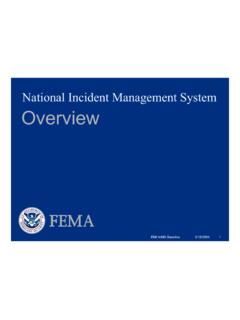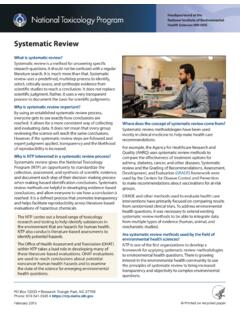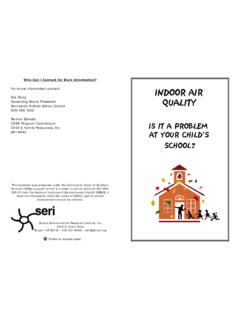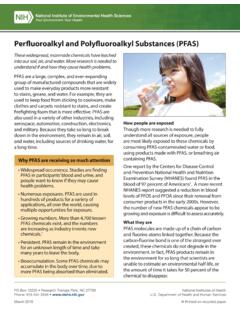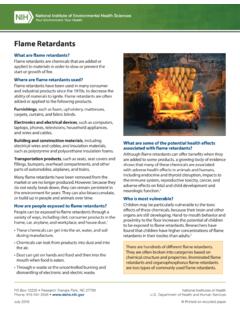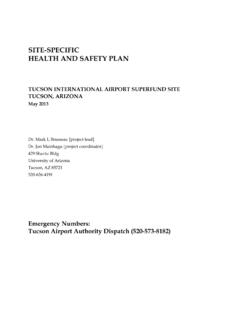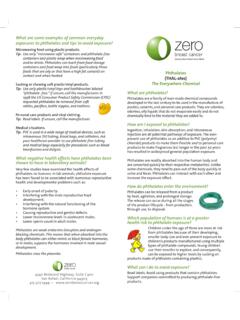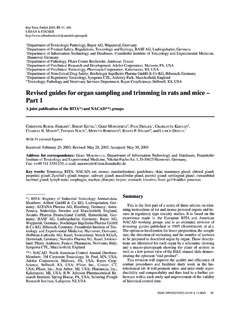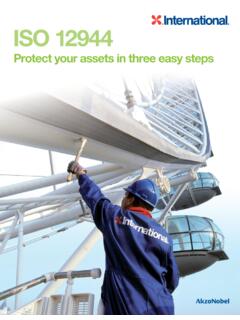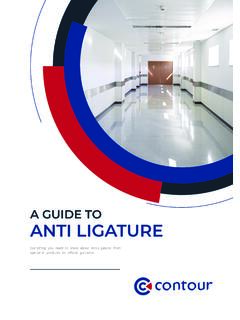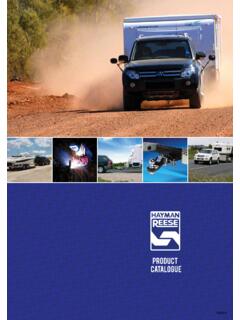Transcription of Homeowner’s and Renter’s Guide to Asbestos Cleanup After ...
1 1 HOMEOWNER S AND RENTER S Guide TO Asbestos Cleanup After DISASTERS HOMEOWNER S AND RENTER S Guide TO Asbestos Cleanup After DISASTERS Cleanup and rehabilitation activities can pose health hazards due to the possible presence of Asbestos . Asbestos can be present in many types of building materials, such as: wrapping around pipes, drywall taping, popcorn ceiling materials, attic insulation and much more. The first concern, however, is safety for you and your family members. Do not allow children to participate in disaster response Cleanup . Inhaling Asbestos fibers released from demolition, renovation and handling of Asbestos is dangerous. WHY WE SHOULD WORRY Asbestos fibers even low exposure to them are a health risk and can cause lung damage, including cancer.
2 When residences containing Asbestos are renovated or torn down, or when the Asbestos is disturbed, minute Asbestos fibers may be released into the air. These fibers are so small that they often cannot be seen with the naked eye and can be inhaled without one even knowing, underscoring how dangerous Asbestos can really be. KEY MESSAGES Wear personal protective equipment. OSHA recommends a rubber half-mask respirator with HEPA (N100, purple) cartridges as a minimum. Know the law. There are strict local, state and federal requirements for Asbestos removal and disposal that trained licensed professionals must follow. Use portable generators carefully, outside and away from the home, to avoid CO poisoning and fires. These materials are more likely to contain Asbestos if installed before 1980: Pipe and boiler and duct coverings (thermal system insulation) Roofing, shingles and siding Floor tiles and vinyl flooring, backing and mastic Vermiculite attic insulation Plaster, cement, putties and caulk Ceiling tiles and spray-on coatings (acoustic and fireproofing) Textured paints Heat-resistant textiles Although residences of any age may contain Asbestos , those built After 1980 are less likely to contain Asbestos , except for homes with vermiculite insulation, which was used until 1990 or later.
3 Certain materials, including floor tiles and roof and siding shingles, are less likely to release fibers than pipe and boiler insulation if still in good condition. If broken or crushed, all Asbestos materials will release fibers to the air. HOW TO FIND OUT IF YOU HAVE A PROBLEM The only way to find out if your home has Asbestos is to have a sample analyzed at a laboratory . Inspections to determine the presence of Asbestos must be performed by certified Asbestos inspectors. See or contact your local health department. State contacts are listed at state- Asbestos -contacts. For Asbestos laboratories visit 2 HOMEOWNER S AND RENTER S Guide TO Asbestos Cleanup After DISASTERS RE-ENTERING YOUR RESIDENCE After A DISASTER Re-entering your home After a natural disaster can pose risks to you and your family.
4 If rescue personnel have searched your home, it may have a FEMA search marking. Here are some tips to make sure it is safe to re-enter the home: Return home only when officials say it is safe. Do not allow children to participate in post disaster Cleanup work. Check for structural safety including, sagging ceilings or floors. Check for loose power lines or gas leaks and make sure the electricity and gas are turned off. Make sure floors are safe water and mud make floors slippery. People with breathing problems or who have weakened immune systems should stay away from the damaged residence. If you find a trapped person, call 911. Do not attempt a rescue, as you may become a victim. Be aware of health and sanitation hazards: o Avoid contaminated buildings and contaminated water as much as possible.
5 O Wash your hands thoroughly with soap and clean water often when working with debris. o Wear proper clothing and respiratory protection. Inform local authorities about health and safety issues, including chemical spills, downed power lines, washed out roads and dead animals. WHAT YOU CAN DO: HANDLING GUIDELINES Homeowners, renters, volunteers and contractors are encouraged to seek the assistance of a licensed/certified Asbestos abatement contractor when cleaning up debris. At a minimum, use the following recommended procedures to handle any suspected Asbestos -containing materials: Always wear personal protective equipment (PPE) when handling Asbestos . PPE includes gloves, goggles, Tyvek or equivalent clothing and respiratory protection. Asbestos fibers are impossible to see so a fitted rubber half-face respirator (mask) with cartridges rated for use with Asbestos (HEPA, N100) is the minimum protection.
6 These masks are not effective in the presence of facial hair. Wet down any suspected Asbestos surface and keep it wet at all times. However, even wet Asbestos will release fibers if it is damaged or crushed during demolition. Wetting broken or damaged Asbestos insulation does not guarantee reduced exposure to airborne fibers. Wash hands After handling Asbestos but before removing the mask. Asbestos will cling to hair, clothing, car seats, pet hair, carpets and other textiles, and may become an ongoing source of exposure for family members. Avoid activities that will cause Asbestos to generate dust such as vacuuming or sweeping. Wet the area down completely and mop or wipe up the dust. If necessary, use a HEPA vacuum approved for use with Asbestos fibers. 3 Keep all family members out of the work area, or seal the area.
7 Do not carry contaminated clothing or other materials home to your family members. Place the contaminated clothing with the Asbestos waste into contractor grade plastic bags. Bag it again; seal and label the bag. Avoid smoking, eating, or drinking in Asbestos -contaminated areas. Post signs: Danger: Asbestos Dust Hazard; Cancer and Lung Disease Hazard; Authorized Personnel Only. Shower or hose off to keep from bringing Asbestos to your current living quarters. SAFETY TIPS ON USING PORTABLE GENERATORS If you use a portable generator for electricity, use CAUTION to avoid carbon monoxide poisoning and fires. Use portable generators OUTSIDE and far away from buildings. Do not put portable generators on balconies or near doors, vents, or windows. Do not use portable generators near where you or your children are sleeping.
8 Never refuel a generator while it is hot. For more information, go to DISPOSAL During construction and demolition of residences, it is extremely important that Asbestos materials be kept wet, double bagged, sealed, and clearly labeled. Make sure Asbestos is disposed of in a specially designated landfill that accepts Asbestos . Find one through your local or state solid waste authority. CLEARANCE BEFORE REOCCUPYING YOUR HOME If Asbestos will be worked on, consult an accredited Asbestos inspector on whether to have the air tested before you reoccupy your home. (Testing involves sampling the air and having an accredited Asbestos laboratory use a special microscope to analyze it.) After the work, have the area inspected to ensure the work is complete and the area is dust-free. If air sampling is done, the inspector will advise you on reoccupying your home.
9 See How to Find Out if You Have a Problem above about finding Asbestos professionals and laboratories. LOCAL CONTACT INFO: HOMEOWNER S AND RENTER S Guide TO Asbestos Cleanup After DISASTERS, JUNE 2015 Hurricane Sandy Rebuilding Task Force - Indoor Environmental Pollutants Work Group 4
